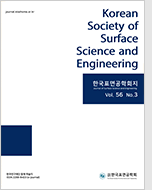
- Past Issues
- e-Submission
-

2021 Impact Factor 1.766
5-Year Impact Factor 1.674
Editorial Office
- +82-2-563-0935
- +82-2-558-2230
- submission@kssse.or.kr
- https://www.kssse.or.kr/

2021 Impact Factor 1.766
5-Year Impact Factor 1.674
The Korean Society of Surface Science and Engineering 2024;57(3):208-213. Published online: Jul, 8, 2024
DOI : 10.5695/JSSE.2024.57.3.208
With the development of industry, miniaturization and densification of semiconductor components are rapidly progressing. Particularly, as demand surges across various sectors, efficiency in productivity has emerged as a crucial issue in semiconductor component manufacturing. Maximizing semiconductor productivity requires real-time monitoring of semiconductor processes and continuous reflection of the results to stabilize processes. However, various unexpected variables and errors in judgment that occur during the process can cause significant losses in semiconductor productivity. Therefore, while the development of a reliable manufacturing system is important, the importance of developing sensor technology that can complement this and accurately monitor the process is also growing. In this study, conducted a basic research on the concept of diagnostic sensors for thickness based on the physical changes of thin films due to etching. It observed changes in resistance corresponding to variations in thin film thickness as etching processes progressed, and conducted research on the correlation between these physical changes and thickness variations. Furthermore, to assess the reliability of thin film thickness measurement sensors, it conducted multiple measurements and comparative analyses of physical changes in thin films according to various thicknesses.
Keywords Plasma; Atomic Layer Etching; Thickness; Thin Film, Sensor.